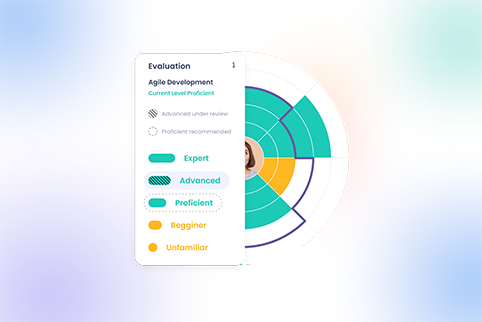High-Performing Organizations: Characteristics Setting Them Apart
11 min read

In the modern business world, the pursuit of excellence is a defining characteristic of companies seeking not just success, but sustained high performance. Which leads to an interesting question: what sets high-performing organizations apart?
While the pandemic has revealed traits like adaptability and workforce resilience, many other characteristics help high-performing organizations stand out. In this article, we’ll explore each one of them as we look at what makes or breaks this type of organization and why others should follow in their footsteps.
Let’s dive right in!
What are high-performing organizations?
High-performing organizations are companies that manage to significantly and regularly outperform their competitors and enjoy much better outcomes, across various business areas: finance (profitability), employees (expertise, quality of hires, and satisfaction), brand image (customer loyalty), etc.
When looking at high-performing organizations, the focus isn’t solely on productivity. These companies are often pioneers when it comes to innovative (work-related) solutions as well as social challenges, like reducing their environmental footprint.
Let’s look at an actual example from the tech sector: Apple isn’t only a $3 trillion company but also a leading innovator in the ARM processors space and committed to making all their products carbon neutral by 2030.
And where high-performing organizations go, others follow, which means these organizations are more than admirable success stories and often end up with an unofficial status of examples worth following, setting the bar high for others in their industry.
1. Compelling mission and clear purpose
A clear and compelling mission serves as a foundation or lighthouse that guides, inspires, and aligns everyone and everything within an organization, from stakeholders, HR, and employees to strategic objectives and internal actions.
It’s also the core of the organizational culture, helping define its key values and fostering a shared sense of identity among employees and team members across different departments — essential for effective collaboration.
Having a compelling mission will not only act as a motivational force for engagement and commitment but also help attract and retain top talent, who are drawn to organizations with a clear purpose, with which they resonate deeply.
The mission also has external benefits, helping high-performing organizations establish their place and role within the larger societal and economic environment, which, in turn, builds trust, leads to lucrative partnerships, and sets the stage for sustainable success.
2. Results-oriented approach
Embracing a results-oriented approach is another common trait among high-performing organizations. It represents an effective way of setting ambitious goals that are achievable and evaluating whether a given initiative or new tool helps (or not) to meet strategic objectives.
A results-oriented approach also acts as a mindset, one that ensures accountability and encourages a constant drive for improvement. It makes it a lot easier to determine what works and what doesn’t, bringing clarity to employees and managers alike, and aligning their individual efforts with larger objectives.
At Google, for example, their OKR system plays a crucial role in helping employees remain focused on results and maintain high-performance levels. It relies on a combination of shorter cycles and specific and measurable milestones — which not only indicate progress but also reveal how individual and team goals align with the larger organizational objectives. Together with data-driven attribution, this system has been one of the pillars of long-term success for the Silicon Valley giant.
3. Strong and effective leadership
We cannot talk about high-performing organizations without mentioning leadership — one of the most important catalysts for success. Driving strategic vision, leadership represents stability and inspiration, especially during times of change or disruption.
Top leaders are often the key to bringing out the best in others and helping your employees reach their full potential. They are one of the pillars of resilient and agile organizations, setting an example worth following and showing that self-development and learning represent continuous journeys, which inevitably lead to high performance and satisfaction.
Leadership also has a direct impact on employee retention and attraction. In the annual reports on the best companies to work for, you’ll often discover organizations whose leadership teams are highly praised. According to Business Insider, Deloitte, UiPath, Dell, Cisco, and Microsoft are only some of the names enjoying the ‘highly-rated leadership’ status.
It’s also worth pointing out that leadership falls into the category of soft skills, which are the skills of the future — with almost 2/3 out of all jobs expected to become soft-skill intensive by 2030. Therefore, investing in leaders now and promoting self-leadership at all levels isn’t only something that high-performing organizations do, but rather a strategic need for all businesses going forward.
4. Continuous learning culture driving employee development
High-performing organizations know that expertise and top talent aren’t only hired but also developed — especially in a workplace defined by skill gaps and talent shortages.
And it all starts with promoting continuous learning as an integral part of the company culture. What does it look like in practice? From the top down, growth represents the default mindset and people are encouraged to take ownership of their careers and professional development.
In high-performing organizations, you’ll notice that talent development is a real priority not only on paper. The process itself is strategic and aligned with organizational goals and benefits from the collaboration of multiple stakeholders beyond HR and top leadership.
In these organizations, modern tools and methodologies are used to facilitate personalized opportunities for development that match each employee’s unique skills and interests:
- Internal mobility: encouraging and facilitating the development of employees across different roles through vertical, lateral, and cross-departmental moves
- Talent marketplace: taking advantage of an integrated platform that uses insights from different data sets (and applications) to accurately match workers with all types of internal opportunities, from temporary projects to mentorship opportunities and new roles
- 70-20-10 learning model: optimizing the growth of your people by focusing their development on experiential learning (70%) and social learning (20%) instead of formal education (10%)
5. Decision-making based on data and advanced analytics
While others are still discovering that data is power, high-performing organizations are already living by this truth. From hiring and training to process optimization and resource allocation — there’s hardly any business area left untouched by advanced analytics.
They use data-driven insights and patterns to take decision-making to the next level and optimize strategic choices based on real-time aggregated information. This means (performance) metrics aren’t only more clear but also better suited and aligned with the company’s ambition and the current capability of its workforce.
Data-based tools also support the performance management process, going beyond the identification of underperforming individuals and teams and actually revealing the blockers and possible solutions (like targeted training).
Using modern analytics, HR departments in high-performing organizations evaluate attrition risks faster and are better positioned to take proactive measures in time, like speeding up the succession planning process in case a key leader is labeled as ‘highly likely to leave’.
And perhaps one of the most important uses of data in these organizations is for identifying and addressing skill gaps — which will only increase in a world where the World Economic Forum expects 1 billion people to need reskilling by 2030.
6. Skills-based approaches as the pillar for transformation
Another common trait of high-performing organizations is their courage to embrace skills-based approaches and take active steps now toward becoming ‘the companies of the future’.
These approaches help them revolutionize and improve a wide range of HR operations and business processes:
- Have a single and more reliable source of truth to make strategic decisions about talent in alignment with operational goals
- Widen the pool and quality of potential hires, by eliminating the need for degrees and selecting candidates based on their skills and proficiency levels
- Identify better-suited L&D programs and optimize L&D programs beyond what was previously possible
- Democratize career progression and make promotion requirements transparent for everyone
- Help to unlock future readiness by anticipating trending skills in the market and addressing internal skill gaps
To increase the effectiveness of skills-based approaches, high-performing organizations will leverage the latest solutions in this emerging field, such as skills management software — which is only one of the features of our skills-centric Nestor platform.
Learn more about skills-based organizations and their advantages.
7. Agility and adaptability are part of company values
For some, it might have been driven by the pandemic. For others, it was already part of their culture — either way, high-performing organizations have had the awareness and insight to adopt agility and adaptability as irreplaceable values.
Combined with skills-based approaches, these values enable them to nurture highly agile workforces, which respond quickly to new (and different) challenges and find creative answers to unforeseen problems.
Agility and adaptability are also the basis for a flexible organizational structure, which is what makes high-performing organizations so good at adapting to market shifts and customer demands better and faster than their competitors. And since they contribute to a more dynamic and responsive work environment, these irreplaceable values naturally drive higher levels of creativity and innovation.
8. Quick to adopt AI and other cutting-edge technologies
In this article, we’ve already mentioned companies like Apple, Microsoft, and Amazon. And what’s another thing they have in common? They aren’t only early adopters but also early developers of disruptive technologies, like AI, machine learning, and automation.
High-performing organizations don’t wait for others to develop ChatGPT policies. They show what potential policies might look like by implementing them within their own structure and encouraging employees to experiment with these revolutionary tools.
They take things a step further by tweaking generative AI solutions and adapting them to the specific needs and strengths of the company. While the developers of these tools provide this possibility to everyone, you’ll often only see high-performing organizations actually taking advantage of it.
Frequently Asked Questions (FAQs) about high-performing organizations
What makes a high-performing organization?
As highlighted by our article, high-performing organizations are defined by various characteristics that touch every department and business function.
From having a compelling mission to a results-oriented approach and from strong leadership to advanced data analytics — these are only some of the traits of high-performing organizations.
In addition to a culture that drives employee development, skills-based approaches, adaptability, and agility, as well as quickly adopting cutting-edge technologies, other characteristics could include:
- Mastering change management
- Embracing HR transformation
- Balancing extrinsic and intrinsic motivators
- Adopting a global mindset
What is a high-performance culture?
A high-performance culture is a deliberate and thoughtful organizational environment, designed from the ground up to motivate employees and empower them to contribute their best efforts to the organization’s mission.
In this type of culture, the fundamental elements are a relentless commitment to excellence, continuous learning, and a growth mindset, which impact, in many positive ways, things like communication, feedback, and taking responsibility for results, among others.
How do you build a high-performance organization?
There’s no magical formula to building a high-performance organization. It is a multifaceted long-term journey, which relies on the successful collaboration of many stakeholders and the implementation of key strategies.
It all begins with having the right foundation in place: the compelling and inspiring mission, the company culture that derives from it, and having the right people and leaders in the initial stage of the process.
Then, it’s about hiring people who have the values that are highly desirable in this type of company and providing them with the necessary support (continuous learning, skills-based development, leadership training) to help the organization move forward.
Of course, the title of ‘high-performing’ or ‘high-performance’ isn’t something static. Companies that enjoy this status today might not have it for 10 years and vice versa. That’s because the demands of the market and consumers, combined with the incredible capacity of technology to be disruptive means that constant evolution is now the new name of the game — which is why flexibility and adaptability are so essential.
Final thoughts
The characteristics we’ve explored in this article are currently making the difference between regular companies and top-performing ones. However, many of these traits will become essential for anyone who wants to remain competitive in the ever-evolving future.
Ultimately, the journey toward becoming a high-performing organization is ongoing, requiring a commitment to continuous improvement and a keen awareness of the changing landscape of business and leadership.







